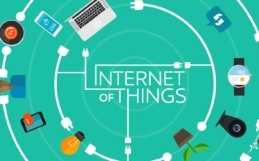We’ve all heard the latest buzz-phrase: The Consumerization of IT. What does it really mean? In the broadest terms it’s this: the penetration of employee-purchased mobile devices like the iPhone, iPad, and Android phones and tablets into the corporate computing environment. This influx of varied devices puts a strain on your IT team, but what does it mean for your business as a whole? The short answer (as always in our industry) is “it depends…”
The issues surrounding the consumerization of IT are essentially the same as those surrounding another popular trendy buzzphrase – the BYOD (Bring Your Own Device) movement. How are these concepts different? One represents a trend in the technology itself and it’s usage- consumerization means that more and more kinds of consumer/personal devices are becoming compatible with the various aspects of traditional corporate computing (i.e. the ability to access applications on a smartphone, rather than a laptop). There is now socio-economic pressure to get those consumer devices integrated into the business practices of the workforce – or else your organization will miss out on the talented, tech-savvy people who find a home at progressive companies that can accomodate their IT wants and needs.
The other concept (BYOD) has to do with corporate policy and initiative. At a minimum, it represents the idea that organizations want to empower their workforce to stay mobile and be able to work from home by using the same device for business and home computing. For the progressive organization, this is a move to enhance productivity too. An employee who is happy with their technology and can work from home with ease is likely going to do just that; allowing them to strike their own balance between work and life.
So, here is a nice way to think about how these concepts relate to one another: the consumerization of IT is putting pressure on companies to create a BYOD policy or augment an existing one. One big problem is this: which devices to allow, and which to exclude?
Beyond BYOD
Once upon a time your company could draft a list of acceptable devices that employees could choose from (and that IT can secure and support) and voila … You now have a BYOD policy. Congratulations, you are a progressive organization!
Not so fast. The number of interoperable consumer devices that can be (whether they should be or not) integrated into a corporate computing network is huge. There are thousands of them. Trying to come up with a list of accepted devices and revising it year after year is not going to work. Don’t focus on the devices … Focus on the system and the way you deliver your apps. It’s time for a shift in your strategic thinking.
The hard and innovative work your organization faces now is this: How do you come up with a corporate IT system that is device agnostic? It’s not about having a good policy. It’s about having an IT system that is flexible enough to endure the consumerization of IT and accomodate any device.




